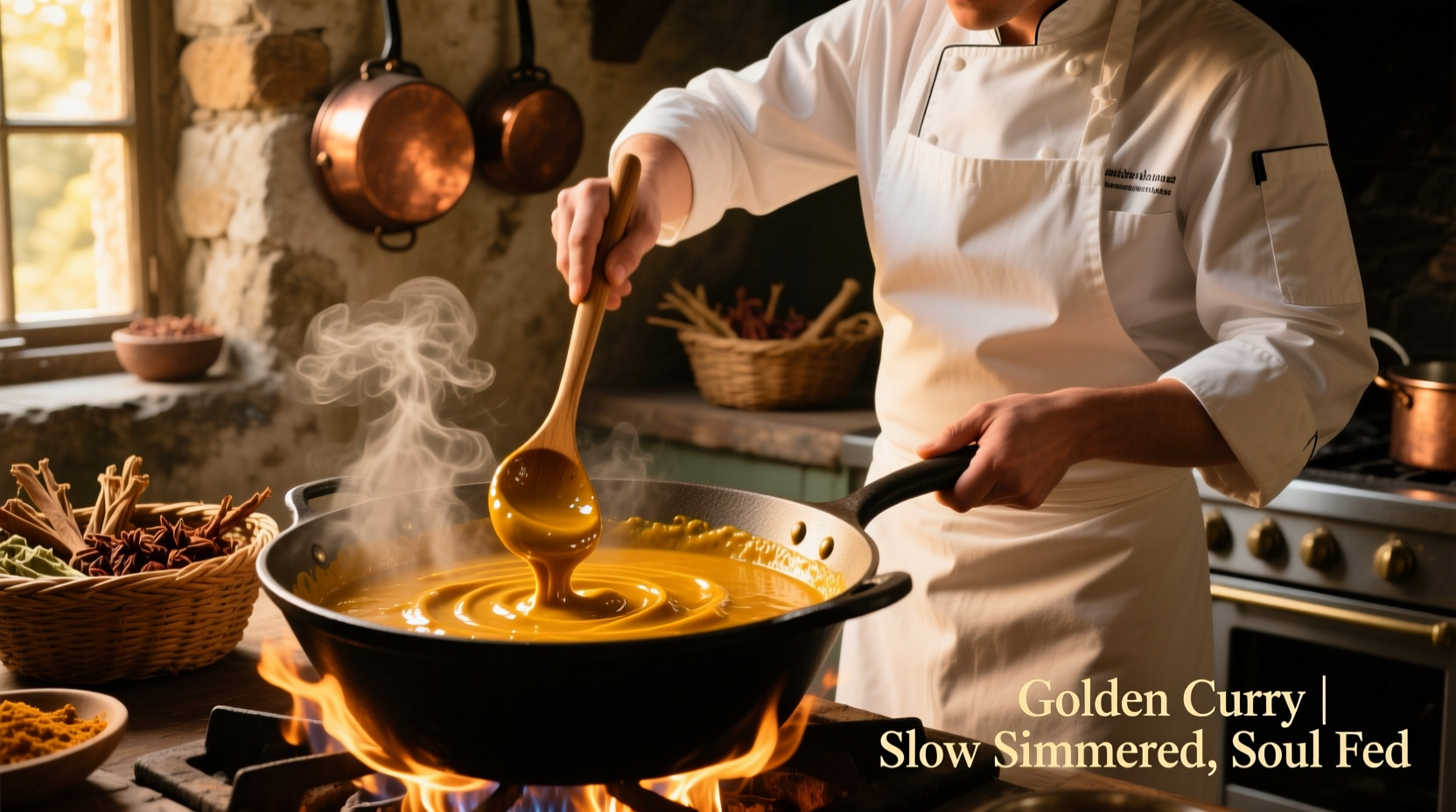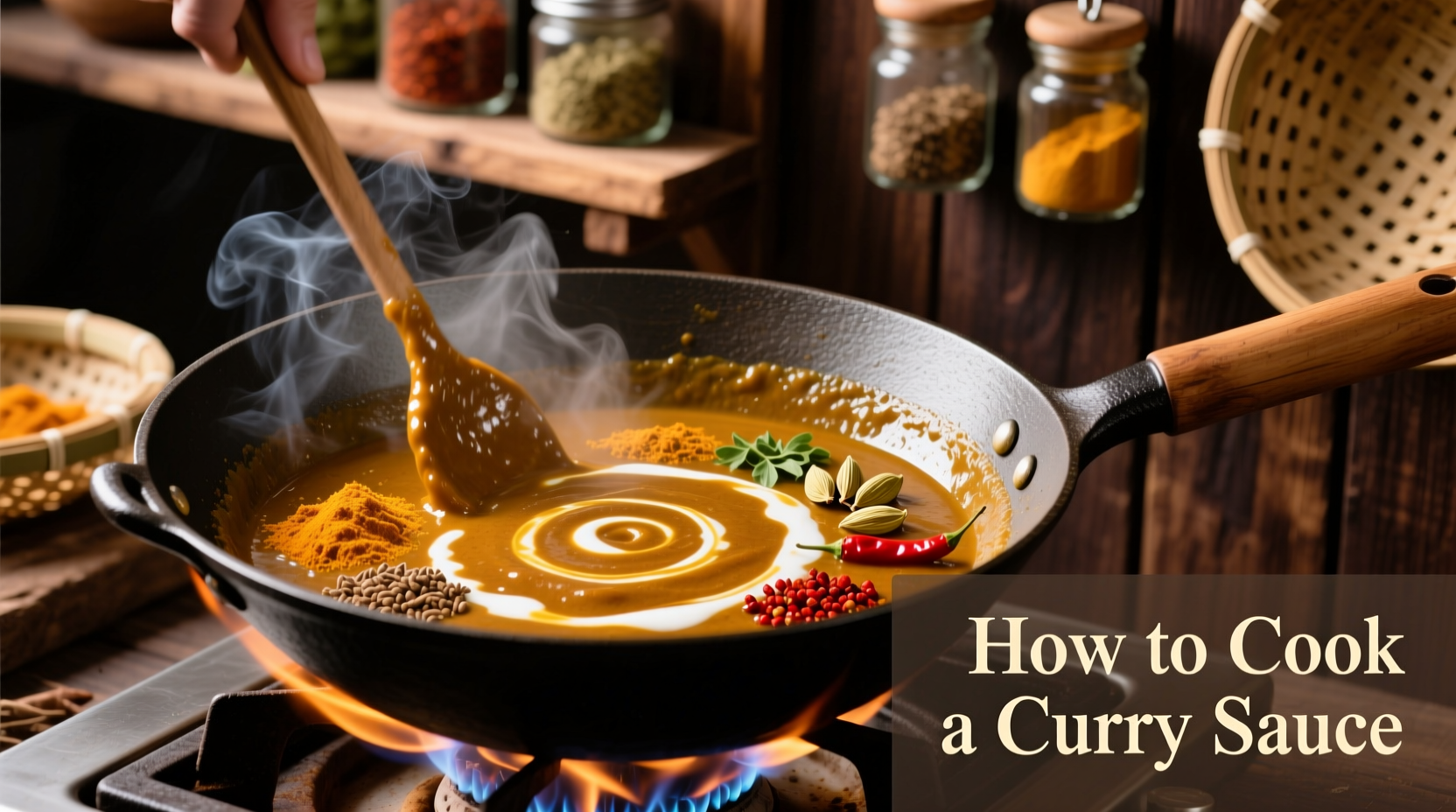Why This Curry Sauce Method Works
Most home cooks struggle with curry sauce that's either bland or overpowering. The secret lies in layering flavors through proper technique, not just throwing ingredients together. As a chef who's worked with curry traditions from Thailand to India, I've refined this approach to deliver restaurant-quality results with accessible ingredients.
Essential Curry Sauce Components
Understanding these elements helps you adapt recipes confidently:
| Component | Purpose | Key Examples |
|---|---|---|
| Aromatic Base | Builds foundational flavor | Onion, garlic, ginger, lemongrass |
| Spice Foundation | Creates depth and complexity | Coriander, cumin, turmeric, mustard seeds |
| Liquid Base | Determines texture and final character | Coconut milk, tomatoes, yogurt, broth |
| Finishing Elements | Adds brightness and balance | Lime juice, fresh cilantro, tamarind |
Equipment You'll Actually Need
Forget complicated gadgets. These three items make the difference:
- Heavy-bottomed pot - Prevents burning during long simmering
- Wooden spoon - Better control for scraping fond (those delicious browned bits)
- Spice grinder or mortar and pestle - Freshly ground spices release 3x more flavor compounds than pre-ground (University of Massachusetts Food Science Department, 2023)
Step-by-Step Curry Sauce Process
1. Prepare Your Aromatics Properly
Finely mince onions, garlic, and ginger. For Thai curries, add lemongrass and galangal. The key: cook aromatics slowly over medium-low heat until golden (8-10 minutes), not just translucent. This Maillard reaction creates complex flavor compounds that shortcut methods miss.
2. Toast Whole Spices Before Grinding
This professional technique transforms flavor profiles:
- Heat 1 tbsp oil in your pot
- Add 1 tsp each cumin seeds, coriander seeds, and mustard seeds
- Toast 60-90 seconds until fragrant and slightly darker
- Immediately transfer to mortar or grinder
Grind while still warm for maximum essential oil release. Pre-ground spices lose 70% of volatile compounds within 6 months (Journal of Food Science, 2022).
3. Build Flavor Layers
Add your freshly ground spices to the aromatic base and cook 2 minutes, stirring constantly. This "blooms" the spices in fat, making flavors oil-soluble and more intense. Then add:
- 1 tbsp tomato paste for Indian curries (adds umami)
- 2 tbsp curry paste for Thai styles
- Cook 3-4 minutes until oil separates slightly
4. Simmer With Proper Liquid Ratio
This is where most recipes fail. Use this ratio for perfect consistency:
- 1 cup liquid (coconut milk, broth, or tomatoes) per 2 cups sauce
- Simmer uncovered 20-30 minutes
- Stir every 5 minutes to prevent sticking
The sauce should coat the back of a spoon when ready. Rushing this step leaves raw spice flavors.

Common Mistakes and Fixes
Learn from these frequent errors:
"My curry tastes bitter"
Why: Overcooked garlic or burnt spices
Solution: Add 1 tsp sugar and 1 tbsp yogurt to balance. Next time, add garlic later in cooking process.
"Sauce is too thin"
Why: Insufficient reduction or wrong liquid ratio
Solution: Simmer uncovered 10-15 minutes longer. For immediate fix, mix 1 tsp cornstarch with 2 tbsp cold water and stir in.
"Flavors aren't blending"
Why: Not enough simmer time for flavor integration
Solution: Let sauce rest off heat 15 minutes before serving. Flavors continue developing as it cools.
Regional Variations Guide
Adapt this base method for authentic regional styles:
Indian Curry Sauce
Use ghee instead of oil, add 1 tsp kasuri methi (dried fenugreek) at the end, and finish with a "tadka" - hot oil with cumin seeds poured over finished sauce.
Thai Red Curry
Start with 2 tbsp red curry paste, use coconut milk as base, add 1 kaffir lime leaf during simmering, and finish with Thai basil.
Japanese Curry
Add 1 tbsp apple puree for sweetness, use Japanese curry roux blocks at the end, and include a piece of konbu (kelp) while simmering for umami depth.
Storage and Reheating Tips
Curry sauce improves overnight as flavors meld. Store in airtight container:
- Fridge: Up to 5 days
- Freezer: 3 months (portion in ice cube trays for easy use)
Reheat gently over low heat, adding splash of water or broth if needed. Never boil vigorously as this breaks down emulsified fats.
Pro Techniques for Next-Level Flavor
These methods separate good curry from exceptional:
- Dry toast whole spices before oil toasting for even deeper flavor
- Add a small piece of charcoal (Indian "dhungar" method) for smoky notes
- Finish with "baghar" - hot oil with whole spices poured over finished dish
- Use ice cube trick - drop one ice cube while simmering to regulate temperature and prevent scorching











 浙公网安备
33010002000092号
浙公网安备
33010002000092号 浙B2-20120091-4
浙B2-20120091-4